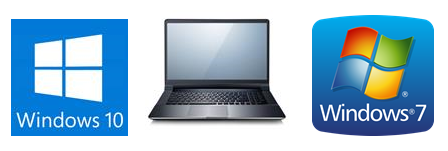
Buying a new CAD spec PC or laptop? Be careful with Windows 10 compatibility and Windows 7 downgrades
Table of contents
While this may be fine for home use, most businesses have yet to upgrade their IT platforms and Windows 7 remains by far the most widely used OS. Furthermore, many software products are either not yet supported on Windows 10, or if they are, this compatibility is limited to the latest versions, or old versions that are still under support.
Dassault Systèmes
For products like CATIA, DELMIA, SIMULIA, and the 3DEXPERIENCE Platform there has always been a ‘certified hardware’ program, which PC vendors use to certify that their computers (and the graphics drivers) work properly with DS products. Today, this includes PCs which ship with Windows 10 and are certified for the latest versions of CATIA, DELMIA, SIMULIA and 3DEXPERIENCE software products. However, this Windows 10 certification does not automatically extend to older versions of these products, which may still be in use on legacy projects.
See our previous blog post which discusses CATIA and Windows 10 compatibility.
The ‘grey area’ that prompted this blog post concerns Windows 7 downgrades, whereby a customer chooses to install Windows 7 on a machine that was shipped with Windows 10. Microsoft provide a perfectly legitimate route to do this, so the practice is completely legal and when properly supported, this is a good solution.
Unfortunately, in some cases the PC manufacturer may not provide drivers for Windows 7, and if they do, they may not have been through DS certification. This may be a temporary problem – the manufacturer is likely to certify on Windows 10 first, put the PC on the market, then develop drivers for Windows 7.
At the time of writing, most big PC vendors are still doing this, but it can take a few months.
So, the message here is to check what software versions you are using and check Windows 10 compatibility BEFORE you buy a new PC. If it turns out that you need to run Windows 7 on your new PC, then please be careful and check the separate list of DS certified Windows 7 machines or ask your PC supplier if Windows 7 drivers are available and certified.
If you require any further support please get in touch


